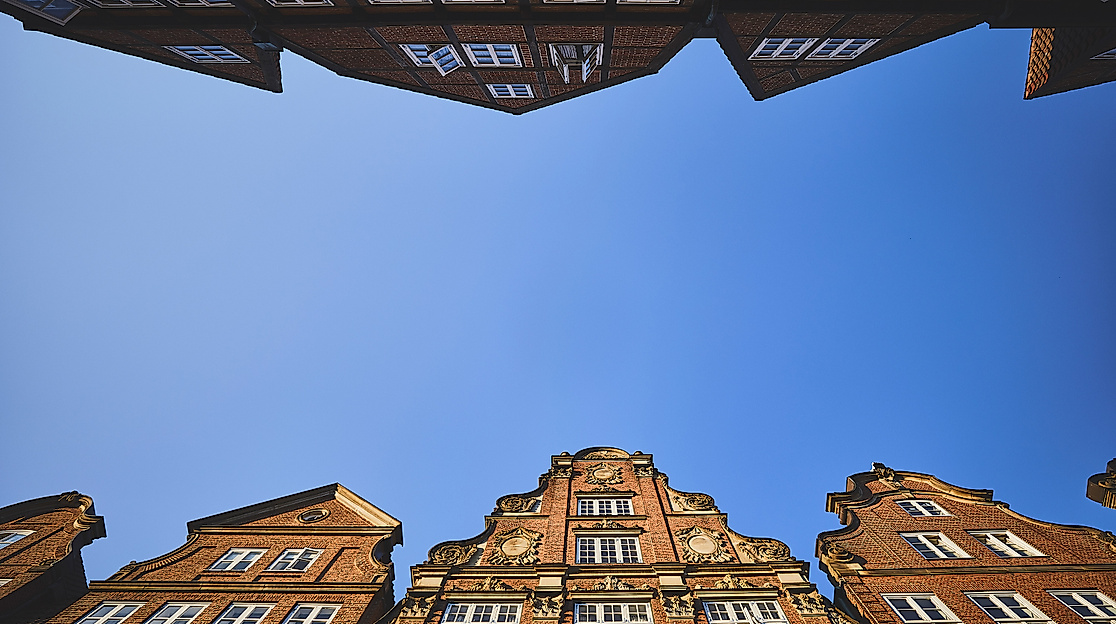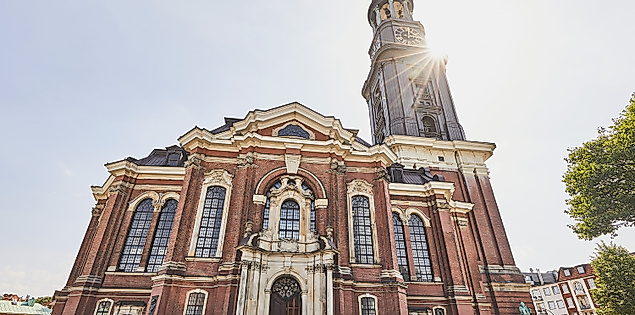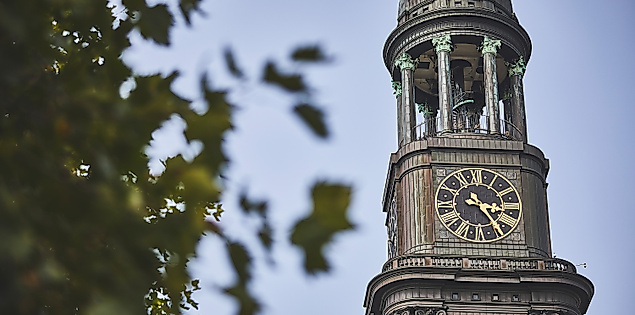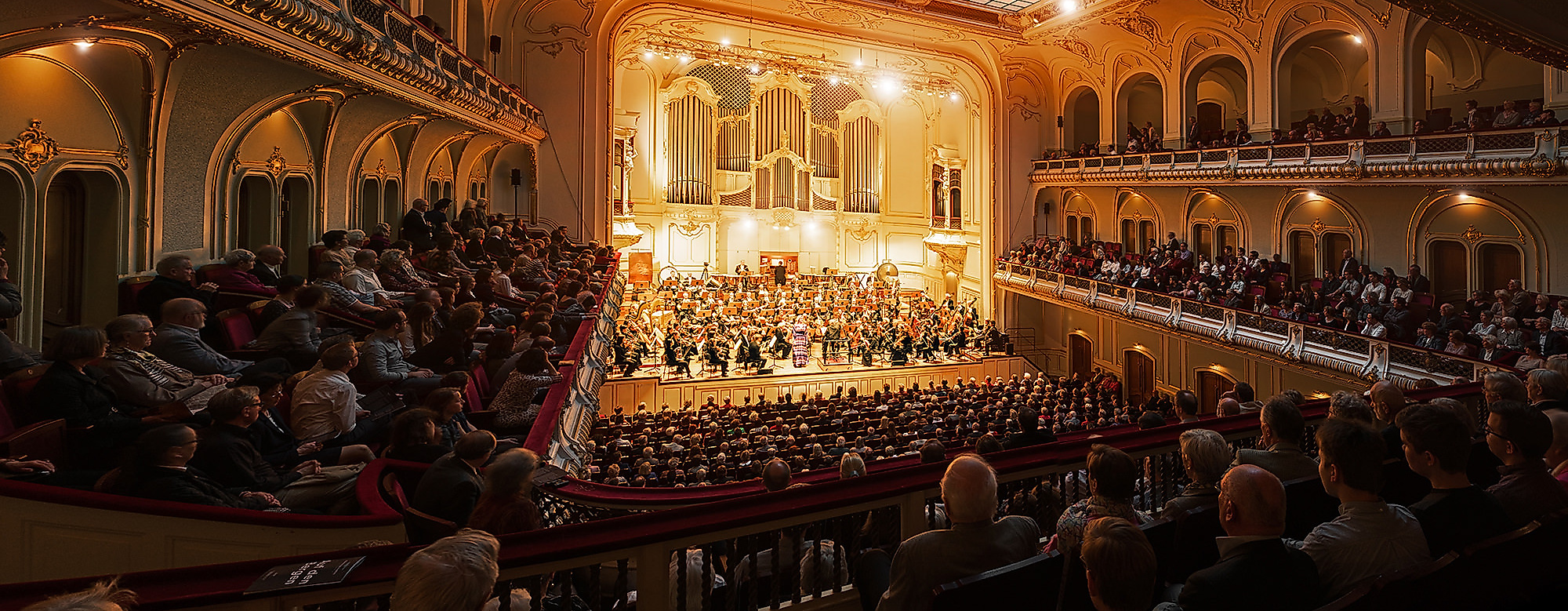
Exploring the city’s unique music scene with all your senses
Hamburg’s vibrant music scene is deeply rooted in the history of the city. Institutions such as St Michael's Church, the Hamburg State Opera and the Laeiszhalle bear the splendour of many great composers, and their legacy still reverberates today.
The Composers’ Quarter
The music city of Hamburg is home to numerous renowned composers who have been decisive in shaping the different musical epochs of their time. Situated in close proximity to St Michael’s Church, the Laeiszhalle and the Hamburg State Opera, the Composers’ Quarter offers a place for commemorating the city’s famous composers. In the small, historically reconstructed houses in Hamburg's Neustadt, classical music is brought to life with exhibits on Georg Philipp Telemann, Johann Adolf Hasse, C. P. E. Bach, Fanny and Felix Mendelssohn Bartholdy, Johannes Brahms, and Gustav Mahler. The Composers’ Quarter presents these outstanding artists in an interactive way and lets you experience Hamburg’s music history up close.
A long tradition of opera and concert performances
Since 1908, the Laeiszhalle at Johannes-Brahms-Platz has been the epicentre of Hamburg’s popular classical music scene, which established itself at an early stage and was repeatedly spurred on by prolific composers and conductors. The creation of this concert hall was initiated and funded by the Hamburg ship-owner Carl Laeisz and his wife Sophie. When it comes to financing and endowing cultural treasures, Hamburg draws on a long tradition: the famous opera house at Gänsemarkt, which was opened in 1678 as Europe’s first public opera house, was also funded by citizens and merchants of the city. This is where Johann Adolf Hasse initially began as a singer in 1718, before making a world career as a composer. A couple of years later, Georg Philipp Telemann assumed the post of director of the opera house. Moreover, Gustav Mahler served here from 1891 to 1897 as chief conductor, with well over 100 concerts under his baton each season. Today, the Hamburg State Opera, which is situated only a stone’s throw away from its former location at Gänsemarkt, continues Hamburg’s rich opera tradition.
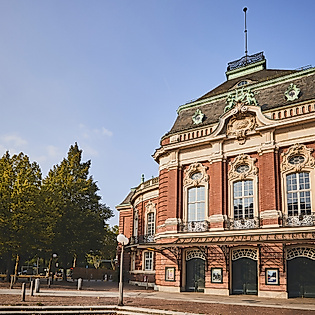
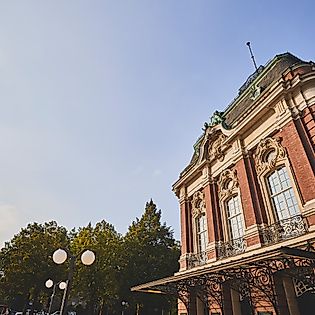
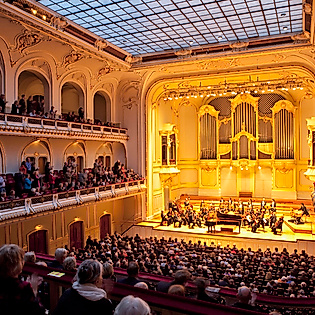
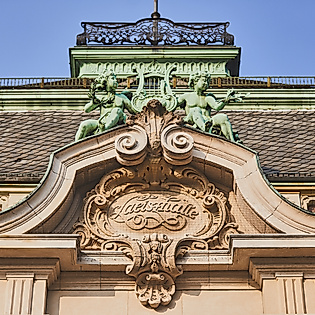
St Michael’s Church and its masters
St Michael’s Church, fondly referred to as “Michel” by Hamburg’s locals, is more than just an impressive landmark overlooking the Hanseatic city. In the 18th century, both Georg Philipp Telemann and his godson Carl Philipp Emanuel Bach served as musical directors of this as well as the city’s four other main churches. C.P.E. Bach even held this post for more than 20 years and found his final resting place in the vault of the church. Johannes Brahms was baptised and confirmed here, and the creation of Gustav Mahler's Second Symphony is closely linked to this institution. As well as boasting an awe-inspiring interior architecture and a beautiful view from the bell tower over the entire city, the spirit of these master composers can still be felt today – e.g. at various concerts and at the daily midday devotions that include a breathtaking organ performance.
Hamburg – city of organ music
Hamburg’s music landscape is just as much shaped by organs, with more than 300 pieces to be discovered across the city. Many of these can be traced back to the craftsmanship of Arp Schnitger, the great organ builder of the 17th century. And Hamburg certainly covers the full range, as the city’s organs are not only examples of beautiful craftsmanship, but can also be found in a wealth of different settings. Outside of Hamburg’s churches, you will also find organs in concert halls, on the premises of the NDR broadcasting centre, in universities, schools, private houses, and even in prisons. Refurbished, reconstructed and in their original state, these organs pay tribute to a music tradition spanning more than 600 years, from sacred buildings to silent movies.
